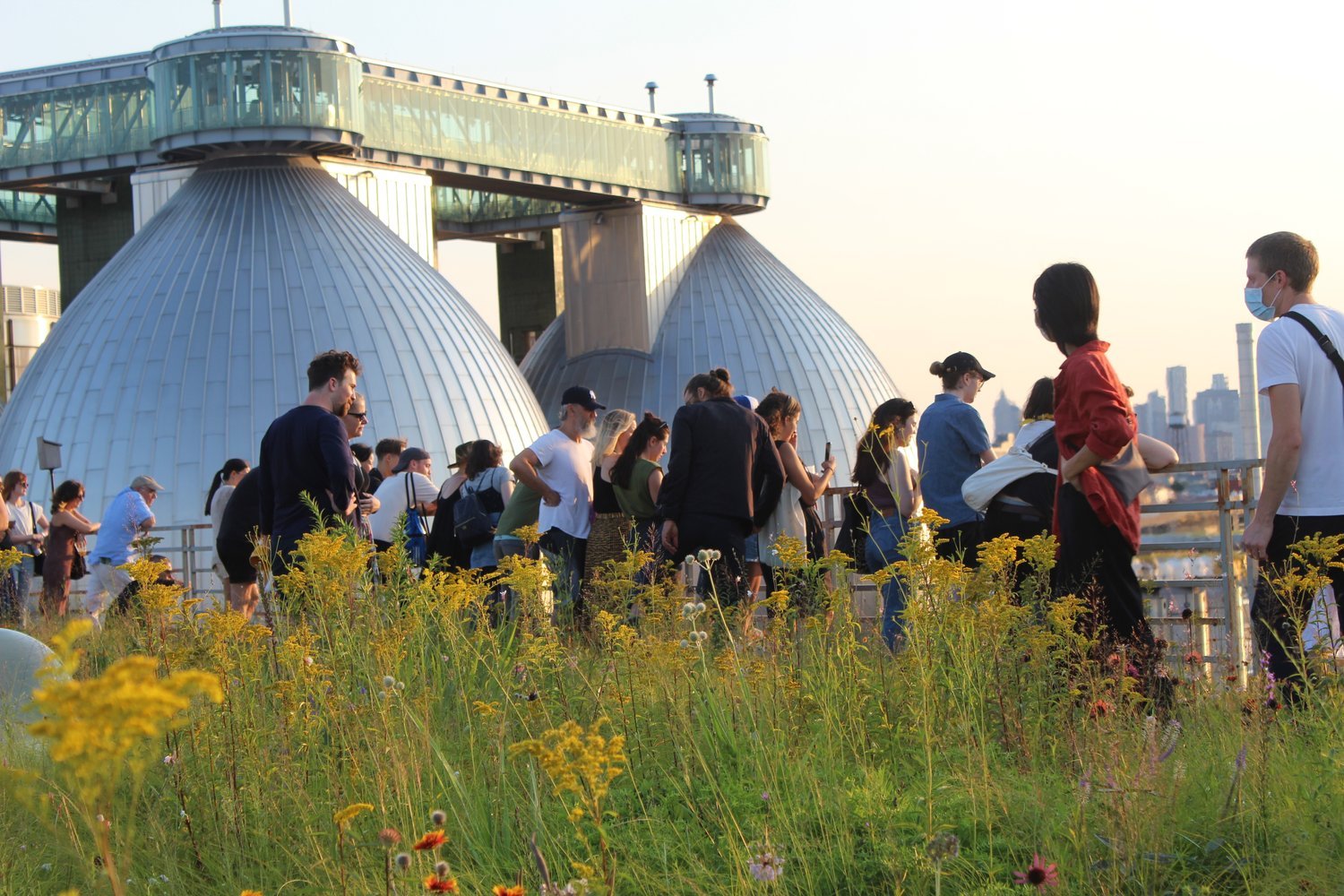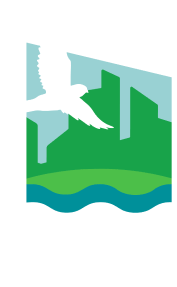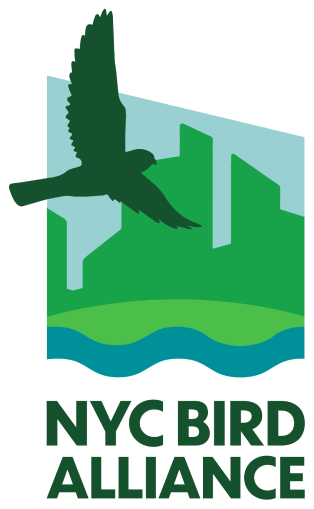How the New Green Roof Tax Abatement Program Can Combat Climate Change in NYC
category: CONSERVATIONGENERALADVOCACY

Kingsland Wildflowers atop Broadway Stages is a green roof planted with native flora in Greenpoint, Brooklyn. Photo: Kingsland Wildflowers.
Jesse McLaughlin, Senior Associate, Advocacy | October 8, 2024
From June through September, I’m the kind of person who scurries from one air-conditioned space to another, like a startled NYC rat darting from one shadowy stoop to the next. You’ll still find me patch birding through the shaded, tunneling paths at the Highland Park Reservoir, but mostly… I’m hiding from the sun and its increasingly intensifying blaze due to climate change.
Jesse McLaughlin, Senior Associate, Advocacy | October 8, 2024
From June through September, I’m the kind of person who scurries from one air-conditioned space to another, like a startled NYC rat darting from one shadowy stoop to the next. You’ll still find me patch birding through the shaded, tunneling paths at the Highland Park Reservoir, but mostly… I’m hiding from the sun and its increasingly intensifying blaze due to climate change.
Why does our city get so hot: The Urban Heat Island Effect
According to research by Climate Central, densely populated cities with tall buildings, minimal tree cover, and lots of vehicle traffic tend to be hotter than more rural areas. This is a phenomenon called the “urban heat island effect,” and there’s reason to believe that New Yorkers experience this effect more than anyone else in the country.
I experience the urban heat island effect in my own neighborhood. When I wander around my neighborhood of mostly empty warehouses and trees hardly taller than me, I tire out quickly. The heat can be oppressive. But when I go just a few blocks out of the way, where trees and other greenery are more abundant, the heat subsides.
How to reduce the urban heat island effect: Green Infrastructure
In recent years, city planners have begun designing built infrastructure to mimic natural areas and the ecosystem services they provide. As a solution to climate change and environmental justice, green infrastructure—like green roofs—benefit both humans and wildlife in a rapidly warming world.
Green roofs and green infrastructure provide countless benefits for people, wildlife, and the environment.
How Green Roofs and Green Infrastructure Benefit People and Wildlife:
- They capture stormwater.
- They improve air quality.
- They cool the air.
- They insulate buildings, reducing energy costs.
- They provide essential wildlife habitat and increase urban biodiversity.
- They serve communities with outdoor space where people can socialize, garden, play, and relax.
With a city that is constantly looking for ways to tackle big issues like climate change, one of the coolest initiatives that's helping on all fronts is the Green Roof Tax Abatement (GRTA). This policy, which was renewed June 2024, doesn’t just make our city greener—it can also make it more equitable for all New Yorkers.
What Is the Green Roof Tax Abatement?
The GRTA is a government initiative that offers financial incentives to NYC building owners who install green roofs. The new and improved 2024 Green Roof Tax Abatement encourages building owners to install green roofs by offering a break on their property taxes. The tax break helps cover a significant portion of the green roof installation costs, making it easier for building owners to go green.
In other words, building owners who might otherwise not be able to afford a green roof are able to install one with the assistance of the tax abatement, making green roofs more abundant across the City—and not just in higher income neighborhoods.
Building Environmental Justice Solutions
Environmental and social issues often overlap, especially in urban areas. When the Green Roof Tax Abatement was renewed—and improved—this summer, it was a step towards balancing these inequities because it offers higher incentives to install green roofs in the areas of NYC dealing with historic injustice. So, when the urban heat island effect disproportionately affects Environmental Justice (EJ) communities, it’s important that the tools to combat it are installed thoughtfully and equitably.
Renewing the Green Roof Tax Abatement isn’t just about making the city greener—it’s about making it fairer, too.
How do I get involved?
The new and improved Green Roof Tax Abatement means millions of dollars are available to New Yorkers to help pay for the installation of green roofs, especially in the districts that most need it.
The Green Roof Tax Abatement can transform the City for the better, but only if we take advantage of this program. An easy way to help this green transition, especially for bird lovers, is by spreading the word:
- Look around. When exploring your neighborhood or the City as large, look for buildings or neighborhoods that could house a green roof. Perhaps the most famous NYC green roof is atop the Javits Convention Center, spanning almost eight acres, but green infrastructure can start small too.
- Talk to your neighbors, coworkers, friends, and building managers. If you think a green roof would be great for your home, place of work, school, or other community building, first begin a dialogue with the stakeholders and decision makers. This article is a great guide for talking points!
- If you’re ready to install, reach out to a certified green roof professional or green roof installation company and let them know you would like to install a green roof and apply for the new Green Roof Tax Abatement:
Keep learning! Curious about green infrastructure? Many of the companies listed above also provide great local resources. You can also email NYC Bird Alliance at greenroofs@nycbirdalliance.org if you have any questions about how to get started with creating a green roof benefiting both birds and people.

.jpg)
.jpg)

